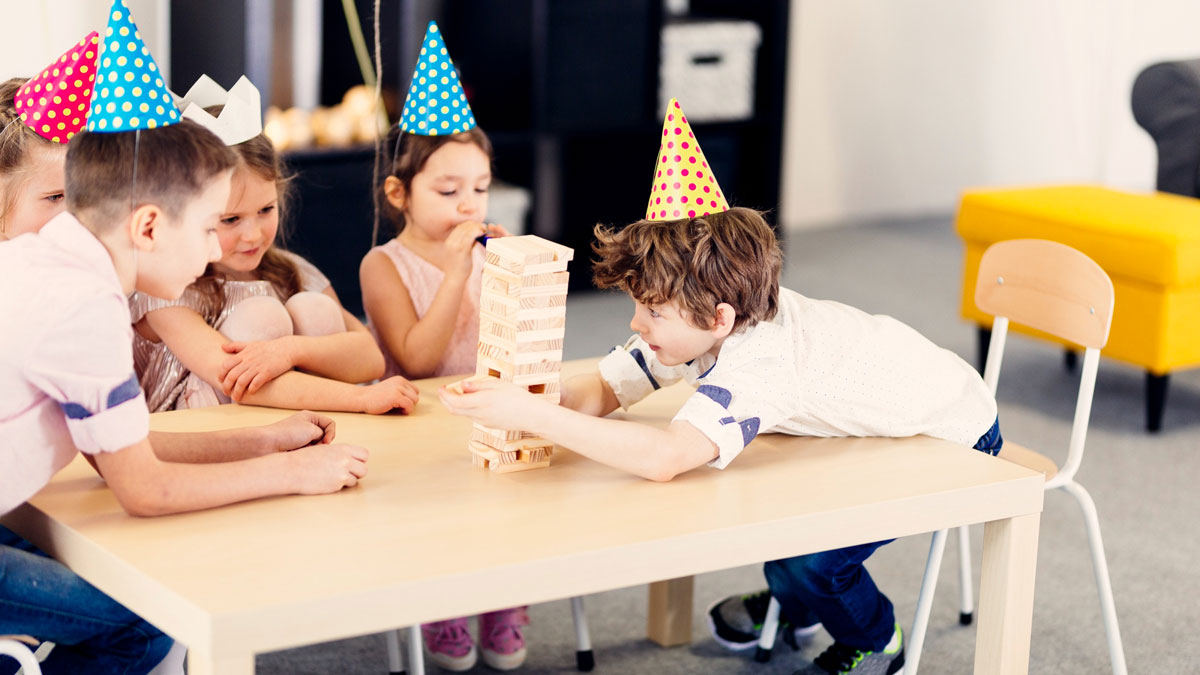
It’s the first day of the new school year, and the very first class is Math! Mr. Smith, the math teacher, begins the lesson with an exciting speech:
“Welcome, brave adventurers, to the Realm of Numbers! Today marks the start of your incredible journey as Math Explorers. Your quest will take you through uncharted lands, where you’ll uncover hidden treasures, solve ancient mysteries, and, by the end of this year, become legendary heroes of mathematics!
As you embark on this adventure, there will be challenges along the way, but fear not! With every problem you conquer, you’ll gain valuable rewards, unlock new levels, and earn badges that will mark your progress. So, get ready to dive deep into the world of numbers and discover the magic that lies within them.”
Mr. Smith continued by explaining the rules of the game, ensuring that every student understood how to participate and what they needed to do to succeed. He made sure they promised to be ready for the challenges ahead in the coming sessions.
The example you just read will serve as a reference in the following sections of this article, where we will explore how gamification can be applied in education, its effectiveness, and the fundamental principles that underpin its use in the learning process.
Gamification in Education? What is it?
A significant number of adults enjoy their leisure time engaging in games, ranging from board games to well-known video games. Those of us who have remained dedicated to gaming since childhood have helped transform the gaming industry into one of the largest globally, exceeding the combined value of the film and music industries!
The fact that Many individuals enjoy games, making gamification an appealing strategy for broad audiences leads researchers to identify game principles and apply them in other areas of life.
Let’s define gamification this way: adding gaming principles or mechanisms into non-gaming activities to increase or enhance aspects like learning and motivation.
Read more about the definition of Gamification.
The non-gaming context category is vast. It can encompass almost anything, from marketing to the work environment and learning, showing us that gamification has a place in various aspects of our lives.

Now, let’s shift our focus to the main topic of the blog: Gamification in education.
Gamification has the power to transform a dull math class into an exciting and engaging experience or to create a fun mobile learning app that teaches science in a creative way.
However, it’s important to note that gamification doesn’t always mean creating a digital game like mobile games or any other type of game. Forget the Squid Game TV show!
Often, users are involved in a gamified process and don’t even realize they are “playing.” Yet, they are motivated to push forward and succeed just by setting some rules.
To gamify a math class, you need to create rules and games, affix a board to the wall, and add some stickers.
Another example: social media platforms integrate gamification into their designs. Users compete to gain followers, improve engagement rates, and collect likes—yet no one considers this “playing Instagram” because it doesn’t resemble a traditional video game.
The key lies in understanding the principles of gamification and implementing them effectively to achieve your goals.
We’ll dive deeper into how gamification can revolutionize learning experiences.
Gamification vs. game-based learning
Gamification and game-based learning are both effective at fostering engagement and sustained motivation in educational settings. Nevertheless, they can be distinctly defined:
Gamification refers to incorporating game-like features such as point systems, leaderboards, and badges into traditional learning activities to boost engagement and motivation.
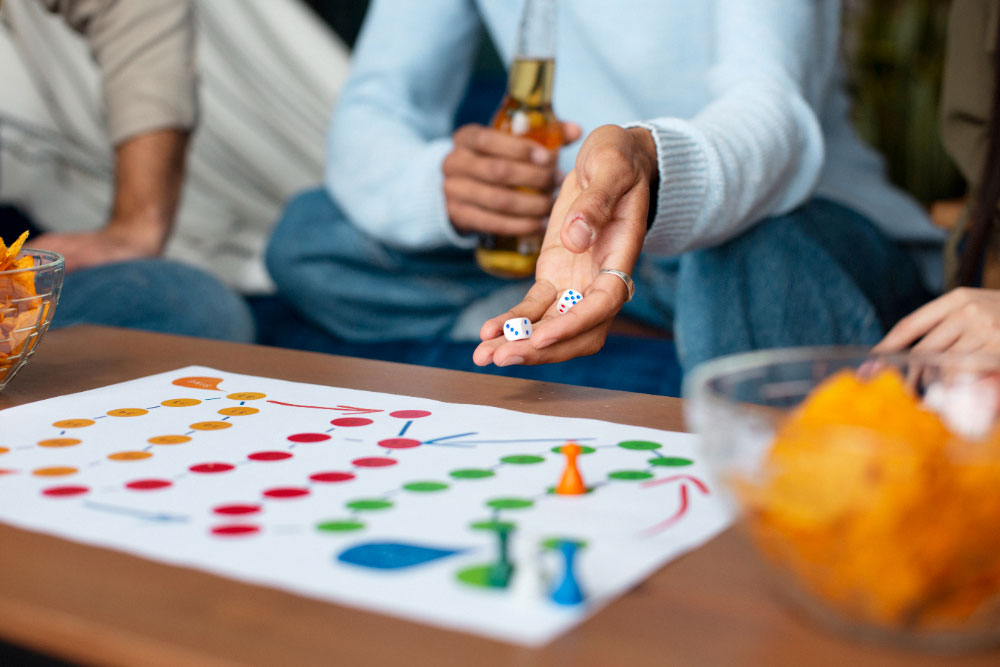
For instance, an online Physics course discussion forum might be gamified with a badge system. Students could earn a “Ptolemy” badge after making 10 posts, a “Galileo” badge after making 20 posts, a “Kepler” badge after making 30 posts, an “Einstein” badge after making 40 posts, and so on. In ideal gamified environments, students can view the badges their peers have received, fostering a sense of camaraderie or friendly competition.
Conversely, game-based learning focuses on creating educational activities that naturally incorporate game elements and principles.
For example, in an Economics course, students may participate in a virtual stock trading competition. In contrast, in a Political Science course, they may assume roles in mock negotiations over a labor dispute.
In summary, gamification integrates game aspects into existing learning frameworks, whereas game-based learning formulates intrinsically game-like educational experiences.
Gamification and game-based learning both promote engagement and sustained motivation in learning, but they do not necessarily result in improved learning outcomes.
Examples of Gamification in Educational Context
6 Successful Examples of Transforming Learning Through Gaming Experiences
Gamification in education is nothing new! This method has been around for a while, and many platforms are already leveraging gaming elements to enhance the learning process.
In this part of the blog, we will examine three successful examples.
Duolingo
Duolingo is one of the most prominent examples of the successful implementation of gamification in educational programs.
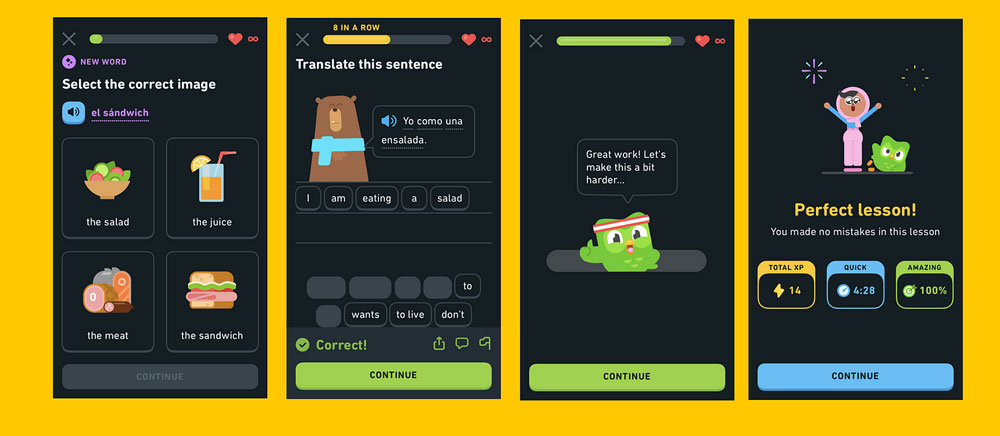
This application is tailored to teaching different languages and utilizes a gamified approach to streamline the learning process for students.
Most users find this platform enjoyable and engaging. However, they still remember the primary responsibility and goal.
Duolingo prioritizes learning over competition and fun. Students do not feel pressured to achieve new milestones or break their previous records. Instead, they focus on learning new words and the grammar of their chosen language.
This application leverages diverse gamification techniques, such as scores, streaks, badges, etc., to keep users engaged and encourage them to return for more.
Generally, everything within the Duolingo interface resembles video games, and it is undoubtedly a successful example of gamification in education.
Minecraft Education Edition
For those who may not know, Minecraft is the name of a trendy online video game.
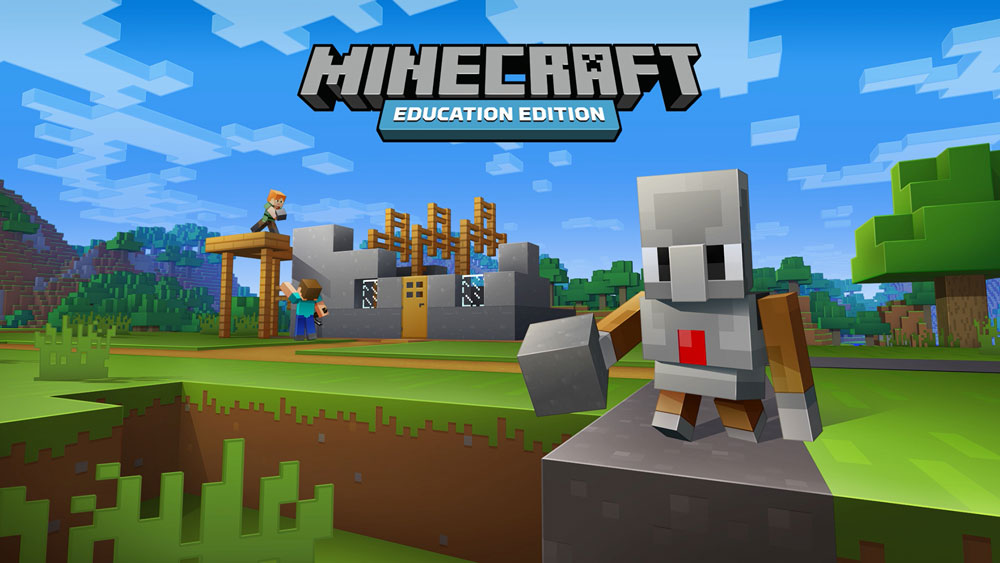
Minecraft Education Edition is dedicated to educational matters, as the name suggests. Providing a virtual space for both educators and learners, teachers and their students can collaborate and progress in lessons and learning skills together.
Since Minecraft is a video game by nature, it’s natural that this version of the game focuses on gamification in the educational process. Honestly, it is an excellent example of success in this revolutionary method.
Remarkably, the platform has shown its worth for coding lessons. However, this environment can benefit other areas of expertise besides programming.
Additionally, you can find game-based methods to learn traditional and basic knowledge of humankind within the space.
Khan Academy
Like Duolingo, Khan Academy is a free learning platform that utilizes gaming elements to teach its users a variety of lessons and skills.
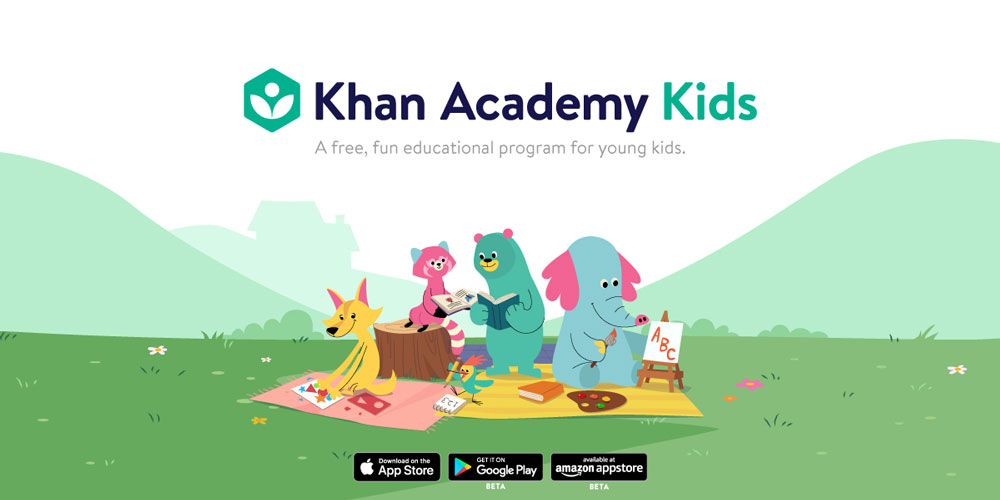
The platform employs various gamification techniques, from points and scores to streaks and leaderboards.
Epic! Reading App
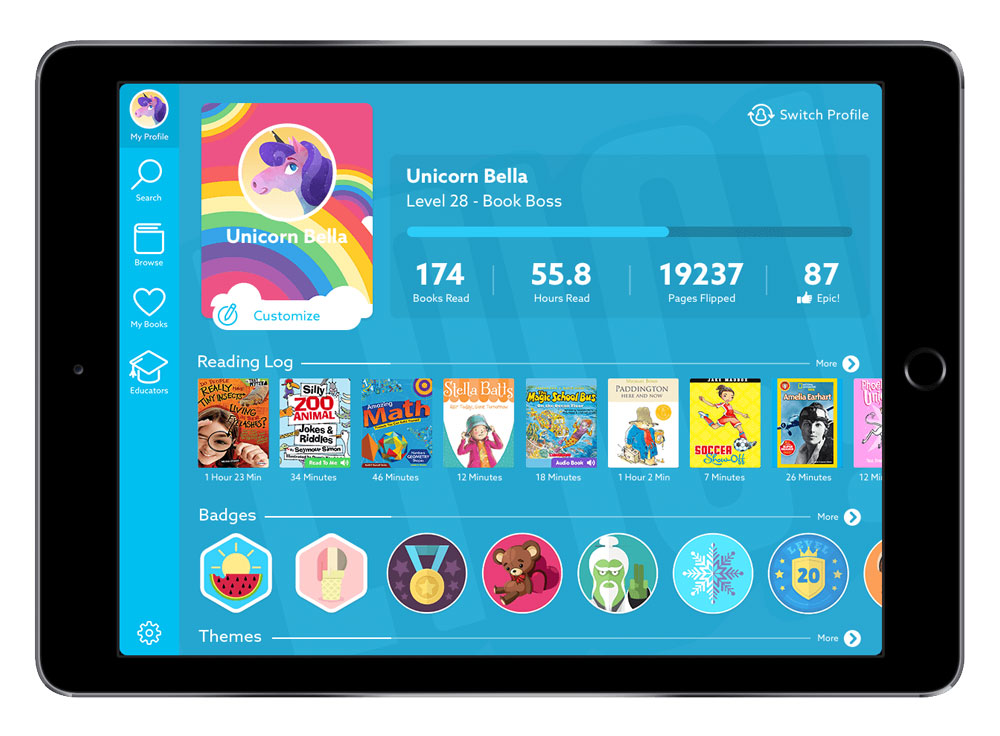
This digital reading platform for kids offers badges and rewards for completing books or reaching reading milestones. It motivates young readers to engage more with literature by turning reading into a fun challenge
GoNoodle
Used in classrooms to encourage physical activity through gamified exercises, it combines movement, rewards, and fun challenges to promote health and focus among students
Some of these techniques and practices provide competition, and others help students track their performance through progress and achievements.
By implementing such techniques, the creators have successfully built an educational program that keeps students motivated and engaged, with gamification at its core.
These six examples are well-known and can be easily observed as inspiration.
Now, let’s explore a practical guide on blending gamification with education class.
Top Gamification Frameworks and Models
The models and frameworks we have introduced in this section are among the best and most well-known, which you can use to plan and implement gamification in educational processes, applications, websites, or even for any other purpose, such as marketing or increasing employee productivity.
1. Octalysis Framework by Yu-kai Chou
The Octalysis framework emphasizes eight core motivational drives that influence user engagement in a gamified experience:
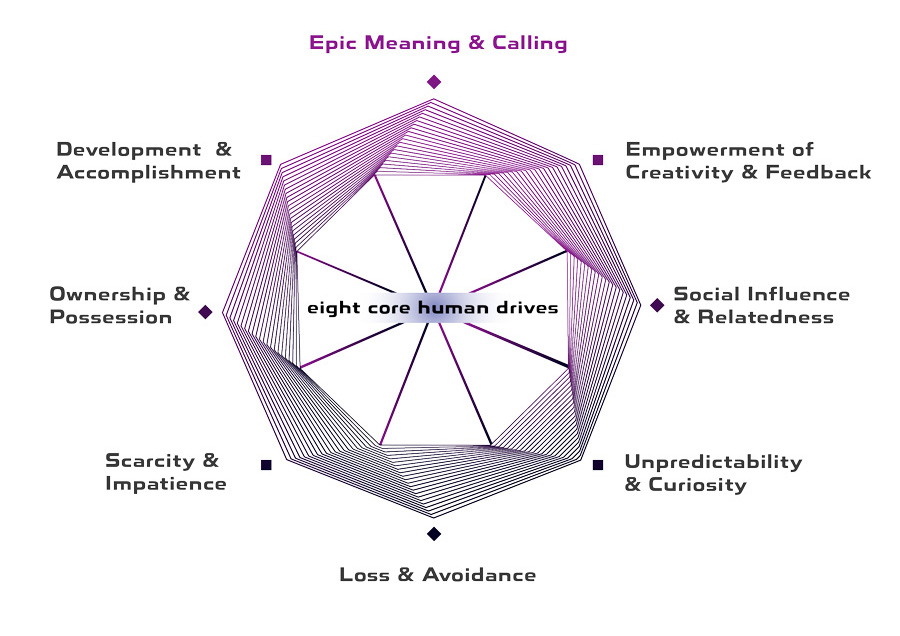
- Epic Meaning & Calling: Users feel they are contributing to a greater purpose.
- Development & Accomplishment: Achievement-oriented mechanics, such as progress bars or rewards.
- Empowerment of Creativity & Feedback: Encourages users to experiment and receive feedback, like in sandbox games.
- Ownership & Possession: Motivates users to care for or invest in virtual goods, avatars, or collections.
- Social Influence & Relatedness: Relies on peer interaction, social validation, and collaboration.
- Scarcity & Impatience: Drives engagement through limited-time offers or rare items.
- Unpredictability & Curiosity: Keeps users intrigued with surprises or challenges.
- Loss & Avoidance: Motivates users by highlighting potential losses if they don’t act.
The framework balances extrinsic motivations (rewards and accomplishments) and intrinsic motivations (creativity and social connection).
2. MDA Framework (Mechanics, Dynamics, Aesthetics)

This framework focuses on the structure of games and gamified systems, breaking down user experiences into three layers:
- Mechanics: The rules and features of the system (e.g., points, timers, badges).
- Dynamics: How these mechanics interact with the user and the system, shaping the player’s experience (e.g., competition, collaboration).
- Aesthetics: The emotional responses or experiences elicited by the game (e.g., fun, challenge, mastery).
The MDA Framework helps designers move beyond superficial elements like points and focus on the player’s overall journey.
3. HEXAD User Type Framework
This model categorizes players into six archetypes based on their motivations:
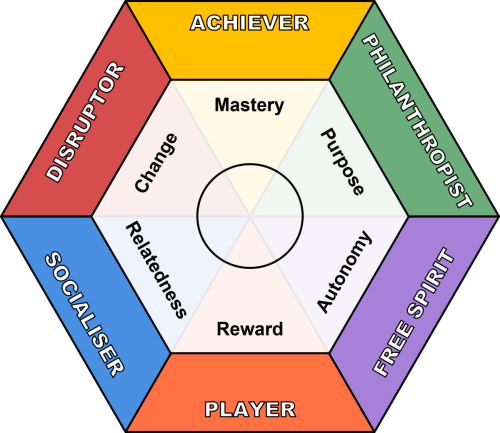
- Achievers: Motivated by progress, goals, and accomplishment.
- Socializers: Engage for interaction and building relationships.
- Free Spirits: Enjoy autonomy and exploration.
- Philanthropists: Driven by altruism and helping others.
- Players: Motivated by rewards and extrinsic incentives.
- Disruptors: Challenge the system, seeking change or causing disruption.
Understanding these user types helps tailor gamification to suit diverse preferences, ensuring inclusivity and effectiveness.
4. Self-Determination Theory (SDT)
Rooted in psychology, SDT focuses on intrinsic motivation and highlights three fundamental needs:
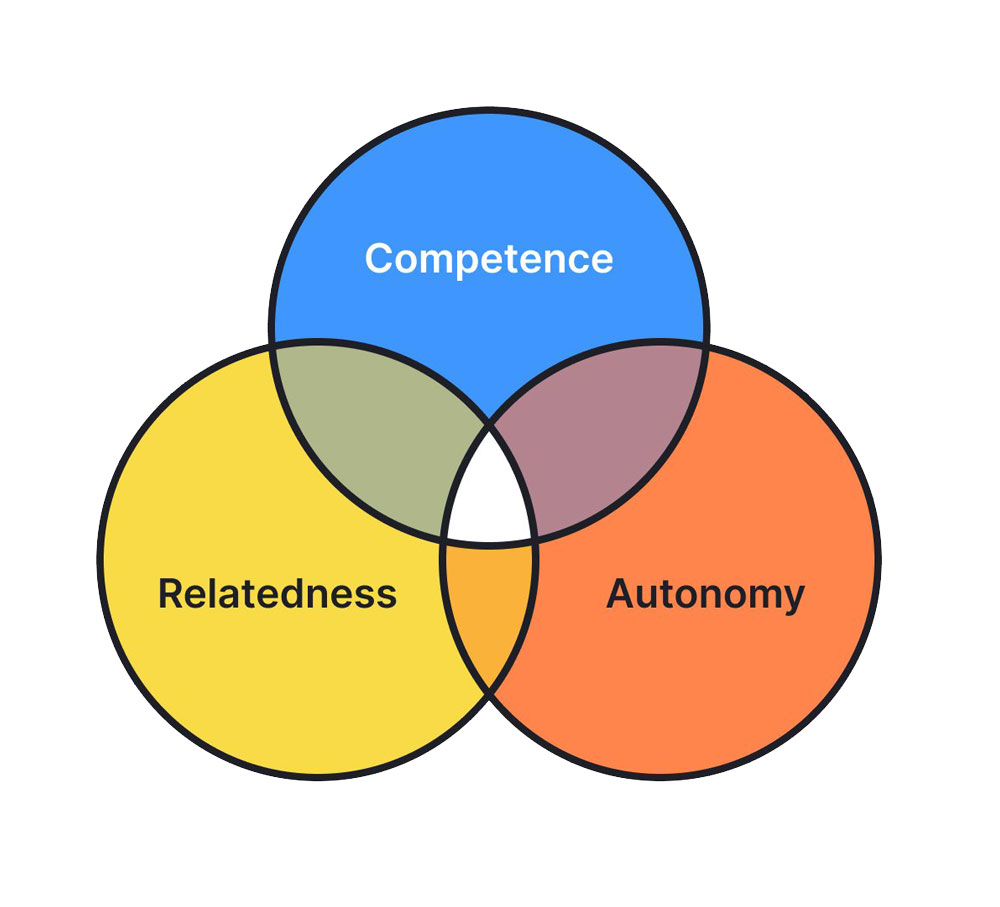
- Autonomy: People want to feel in control of their actions.
- Competence: Users want to feel capable and experience mastery.
- Relatedness: Humans thrive on connections and meaningful relationships.
Gamified experiences leveraging SDT emphasize long-term engagement by fulfilling these psychological needs rather than relying on external rewardsArmando Toda (editor), …(Advances in Game-Based….
5. Points, Badges, and Leaderboards (PBL)
PBL is a simple and widely used gamification approach that focuses on extrinsic motivators:
- Points: A measurable reward for user actions, fostering immediate gratification.
- Badges: Visual achievements that showcase milestones or skills.
- Leaderboards: Rankings that encourage competition and social comparison.
While effective for short-term engagement, over-reliance on PBL can lead to “gamification fatigue” if intrinsic motivators aren’t incorporated.
6. Flow Theory by Mihaly Csikszentmihalyi
Flow theory explains the state of optimal engagement, where users are so immersed in an activity that time and distractions fade away. This state occurs when:
- Challenge matches skill: The activity is neither too easy (boring) nor too difficult (frustrating).
- Clear goals and feedback: Users know what they’re working towards and receive timely feedback.
- Complete focus: Users are fully immersed in the activity.
In gamification, ensuring a balance between challenge and user capability is crucial to keeping participants in the “flow” state.
10 fundamental principles for effective gamified education
- Meaningful Purpose and Narrative: Gamification should create a sense of purpose or align with the user’s intrinsic motivations, such as contributing to something larger than oneself. This principle involves integrating compelling narratives to keep users engaged.
- Core Drives for Engagement: The Octalysis framework by Yu-kai Chou identifies eight core drives of motivation, such as achievement, empowerment, social influence, and unpredictability. Designing gamified experiences using these drives enhances engagement.
- Challenge and Skill Balance: Aligning with Csikszentmihalyi’s Flow Theory, gamified activities should balance challenge levels with users’ skills to ensure engagement without causing boredom or frustration.
- Feedback and Progression Systems: Provide immediate and clear feedback mechanisms like points, badges, leaderboards, or progress bars to inform users of their achievements and next steps.
- User-Centric Design: Adopt player-centric design strategies that consider users’ needs, preferences, and types (e.g., achievers, explorers, socializers) to create personalized and meaningful experiences.
- Social Connectivity: Foster collaboration, competition, or community by integrating social elements such as team challenges, leaderboards, or sharing achievements.
- Reward Mechanisms: Use intrinsic (e.g., sense of accomplishment) and extrinsic (e.g., tangible rewards) motivators strategically to drive user behavior while avoiding dependency on rewards.
- Autonomy and Choices: Allow users to make decisions that matter within the gamified system, offering them freedom and meaningful choices, which enhances their sense of control and ownership.
- Behavioral and Motivational Theories: Base gamification design on established theories like Self-Determination Theory (autonomy, competence, relatedness) and behavioral economics to align systems with human behavior.
- Iterative Prototyping and Testing: Continuously prototype, test, and refine gamification designs based on user feedback and engagement metrics to ensure effectiveness and adaptability.
These principles align with the literature’s emphasis on blending user psychology, game mechanics, and real-world applications to motivate, engage, and create meaningful experiences.
step-by-step guide for implementing gamification in Education
This section will outline the key steps involved in developing a gamified experience for education.
In parallel, each step is defined as a step for gamifying math class according to our example in the introduction.
Step 1: Define Objectives
- What to do: Identify the learning goals you want to achieve. These could include improving math skills, increasing student participation, or fostering problem-solving abilities.
- Math Class Example: “Students will master multiplication and division by the end of the semester and demonstrate understanding through real-world problem-solving.”
Step 2: Understand Your Audience
- What to do: Analyze the needs, interests, and skill levels of your students. Also, consider their preferred activities or games.
- Math Class Example: For younger students, use colorful visuals and simple challenges. For older students, integrate more complex problem-solving quests or puzzles.
Step 3: Choose a Theme
- What to do: Select an engaging theme that aligns with the content. Themes make learning immersive and fun.
- Math Class Example: A “Math Adventurer” Quest where students solve math problems to “explore new lands” or “unlock treasures.”
Step 4: Select Game Elements
- What to do: Incorporate game mechanics to make the class interactive. Examples include:
- Points: Award points for correct answers or participation.
- Levels: Create levels of difficulty for tasks.
- Badges: Provide badges for achievements (e.g., “Multiplication Master”).
- Leaderboards: Show progress (optional to avoid unhealthy competition).
- Storylines: Tie problems to the storyline (e.g., “Help the King solve this puzzle to unlock the treasure!”).
- Math Class Example:
- Points for every correct answer.
- Levels: Easy (multiplying 2-digit numbers), Medium (multiplying 3-digit numbers), Hard (word problems).
- Badge: “Problem-Solving Knight” for completing 10 hard problems.
Step 5: Create Challenges and Rewards
- What to do: Design tasks that match the learning goals and reward students for effort and success.
- Math Class Example:
- Challenges: Weekly quests (e.g., “Solve 20 problems to cross the Magic Bridge”).
- Rewards: Stickers, badges, or extra credit for completing challenges. For big milestones, unlock “special powers” like a hint card.
Step 6: Incorporate Collaboration and Competition
- What to do: Use both cooperative and competitive elements to engage students.
- Math Class Example:
- Collaboration: Group challenges where teams work together to solve a set of problems.
- Competition: A friendly leaderboard showing progress. Optionally, only show team rankings, not individuals, to maintain a positive atmosphere.
Step 7: Use Tools and Platforms
- What to do: Integrate digital tools or simple classroom setups for gamification.
- Math Class Example:
- Use a platform or simply designed files for quizzes for classroom management.
- For offline classes, use printed badges, progress charts, and story-based worksheets.
Step 8: Monitor and Provide Feedback
- What to do: Track progress, adjust difficulty, and give constructive feedback.
- Math Class Example:
- Regularly review scores and provide tips for improvement.
- Celebrate progress during class with announcements like “Level-Up Moments!”
Step 9: Gather Feedback and Improve
- What to do: Ask students about their experience and refine the strategy.
- Math Class Example: Conduct a quick poll or discussion: “What did you enjoy most? What can we change to make it better?”
Step 10: Celebrate Achievements
- What to do: Organize a finale to celebrate milestones and keep students motivated for future tasks.
- Math Class Example: A “Math Hero Ceremony” where students receive certificates and share their favorite challenges.
Sample Weekly Plan for Math Class
- Monday: Introduce the weekly quest and explain the theme (e.g., “The Mystery of the Multiplication Pyramid”).
- Tuesday-Wednesday: Assign daily challenges (worksheets or group activities with game mechanics).
- Thursday: Conduct a collaborative activity (e.g., solving a mystery by working together).
- Friday: Review scores, distribute rewards, and reflect on what was learned.
By breaking down gamification into these manageable steps, you can make your math class more engaging, interactive, and effective for all learners.
How Effective is it?
Statistics Speak! Based on the data we will reveal here, gamification in education is a practical approach!
Some studies indicate that gamified education has many benefits and advantages.
A study examining the impact of challenge-based gamification on learning has intriguing results.
This study explores the impact of challenge-based gamification on learning outcomes in statistics education through a gamified application, “Horses for Courses.”
The results show that incorporating gamification into traditional teaching approaches, like lectures and reading tasks, leads to an 89% improvement in student performance.
Among the tested groups, the highest improvement was observed when gamification and reading were combined, although the two tasks did not produce a synergistic effect. Both methods independently improved learning outcomes, with gamification alone yielding substantial benefits. Engineering students and female participants experienced the most significant performance gains, suggesting that gamification may have varying effects across demographic groups.
The findings highlight the potential of challenge-based gamification to make challenging subjects, such as statistics and data-related topics, more engaging and effective. By incorporating features like points, levels, challenges, and leaderboards, the application fosters a competitive and interactive learning environment.
Despite its success, the study acknowledges limitations, such as differences in English proficiency and motivational incentives among participants, and calls for further research. This work underscores the value of gamification in education, offering practical insights for its application in STEM fields and other academic disciplines.
Here’s another critical insight: gamification is projected to surge by an average of 28% annually, a trend set to continue until 2030 (Source: Precedence Research).
This robust growth underscores the value of gamification as a strategic investment for educational platforms.
Furthermore, a study conducted in a Greek university shows that adding gaming elements and principles to educational programs results in an 89% increase in students’ performance, which is noteworthy.
Additionally, an article published on the Breaking Travel News website claims that this approach increases engagement by 65% among students. Earlier in this blog, we discussed that improving engagement is one of the core benefits of leveraging gamification, and this stat confirms that allegation.
In addition to increasing engagement, we addressed higher knowledge retention as another advantage. Surprisingly, with gamification, students can recall 90% of what they have learned, which is much higher than traditional methods.
Regarding boosting motivation, data demonstrate that 68% of all students involved in the research felt more motivated because of gaming elements, like points, badges, leaderboards, etc. (Source: Taylor & Francis Online)
Gamification also has a positive impact on homework completion rate! Since homework was invented, almost no one has liked it. However, gamification has changed human behavior regarding this matter.
According to ScienceDirect, gamified homework with gaming principles like points and rewards is desirable among different generations of students. If you seek numbers, we can tell you that the completion rate for gamified homework is more than 56%, while the rate for traditional models is less than 19%!
Specifically, children with ADHD will benefit a lot from gamification in education. People with ADHD have concentration issues; therefore, proceeding with traditional approaches is similar to torture for them.
Fortunately, gamification in education has been proven a practical solution for them. Referring to PubMed, 73% of children with ADHD reported a continuous improvement in paying attention after regularly participating in a specific gamified educational program named EndeavorRX.
Last but not least, another study by the National Library of Medicine on medical students shows that 95% of them felt more engaged with gaming elements added to their lessons. Also, 74% of these future physicians admitted that gamification in education makes learning much better and more effective than traditional, boring lectures.
Since you now see its effectiveness, let’s proceed to explore gamified education benefits.
Benefits of using gamification in education
So far, we’ve covered some of the primary advantages of gamification in educational processes. However, in this section of the blog, we will examine all its pros in detail.
Increased Focus and Engagement
Due to the prevalence of social media platforms, online games, and various applications, our brains are inundated with dopamine releases on a daily basis. As a result, it is challenging to focus on a single topic and pay full attention to it.
Gamification is a powerful tool that can transform the learning experience into an exciting and engaging journey. Just like games and social media, it triggers dopamine release, making learning a fun and rewarding process.
As it adds gaming elements to the learning process, it is predictable that it can increase engagement and encourage collaboration, which is crucial to enhancing students’ learning and streamlining educators’ teaching.
This transition from a teacher-centered monologue to a collaborative dialogue fosters enjoyment and ensures benefits for all involved parties.
It is one of the main differences between traditional approaches and gamified learning.
Additionally, when all students take part in the whole process, there will be a competition. Often, competition enhances skills, as everyone tries to seize the first place.
Augments Motivation
As a result of competition, students are motivated to improve their understanding of lessons, striving for better results. Furthermore, they may study additional resources to learn more and increase their knowledge base in their free time.
The power of gamification, through the use of points, badges, scoreboards, and leaderboards, can ignite a spark of motivation in students, leading them on a path of active learning and self-improvement.
As an educator, you or your team must set achievable goals to encourage learners to try harder to accomplish those milestones, proving their worth to themselves and other players in the game.
If there are rewards for top attendants, the motivation bar will rise even higher, as humankind will be genuinely satisfied when acquiring prizes.
However, there is another side of the coin that can ruin everything!
If the educational program focuses too much on the competition aspect, the primary goal, learning, will fade slowly! We will examine this possible issue further in the blog.
Improved Knowledge Recall
One of the biggest problems with traditional educational programs was that most of the knowledge was gone forever after a while! Learning something with difficulty and resentment often leads to poor retention over time.
However, the situation has changed with the introduction of gamification in education. Students are now able to recall and apply the lessons and skills they learned, even after a significant period. This is a testament to gamification’s lasting impact and engagement in the learning process.
When the educational program’s members actively test what they have learned, they carve the concept into their brains, allowing them to recall it easily later.
On the other hand, humankind’s mind eagerly remembers positive and fun experiences despite boring, stressful situations that people strive to forget.
Let’s bring in science to find out the reason behind this phenomenon.
The hippocampus is a part of the brain responsible for what we remember. By leveraging gamification, this part of the brain is stimulated. Hence, what we learn will become long-term memory.
Additionally, dopamine, which we mentioned earlier, is released from the hippocampus.
Instant Feedback and Suggestions
When students find possible problems along the way, they can overcome them quickly and do not need to wait until the end of the program. This way, they will stay on the right track and address mistakes before they become part of their knowledge.
Feedback is typically provided immediately in gamified education processes, enabling program participants to optimize their strategies quickly.
In addition, instant positive feedback can motivate students more than ever and encourage them to work even harder to achieve significant accomplishments.
Feedback in real-time is one of the main characteristics of games. Players can assess their performance through statistics and numerical data. Therefore, it is vital to utilize this element while leveraging gamification in education.
Expanding Online Education
The online world has been adopted by the masses recently. Even individuals who were previously hesitant to embrace technology now utilize various internet platforms to meet their diverse needs.
Education on online platforms has seen a significant rise. In the face of the pandemic, all forms of education for various skills and lessons transitioned online, offering a convenient and accessible learning experience.
Anyway, online educational platforms have a high potential for implementing gamification and maximizing the benefits of this approach.
The integration of technology allows these platforms to be creative and leverage suitable gaming principles based on their goals and their target audience.
Given that online classes often lack the engagement and collaboration of physical ones, it becomes paramount to gamify the experience. This not only increases the engagement rate but also keeps the students motivated to continue learning.
Improves Collaboration and Social Skills
Group tasks and challenges that include gamification foster teamwork, enhance communication and facilitate peer learning. Engaging in multiplayer games with common goals motivates students to work together and strengthen their social bonds and connections.
Encourages Resilience and Persistence
Gamified education introduces challenges and levels that encourage students to navigate obstacles and persist through setbacks. The chance to retry and enhance skills fosters a growth mindset.
Fosters Creativity and Innovation
Gamified learning environments often involve open-ended challenges that encourage creative problem-solving and innovation.
Storytelling and role-playing elements stimulate imaginative thinking.
Supports Emotional and Social Development
In gamification, rewards and recognition enhance confidence and self-esteem. Collaborative and role-playing activities foster empathy and understanding among peers.
What Are the Challenges of This Approach?
While gamification in education offers numerous benefits, it also presents challenges and complications.
In this part of the blog, we will discuss these challenges, starting with:
Design Complexity
- Aligning Objectives with Gamification: Ensuring game mechanics support learning goals without becoming distractions is challenging.
- Balance Between Fun and Learning: Overemphasizing entertainment may reduce the focus on educational value.
- Scalability: Designing gamified experiences that cater to diverse class sizes, subjects, and age groups can be complex.
Technical and Resource Constraints
- Infrastructure Requirements: Schools may lack the necessary technology, such as reliable internet access, devices, or software platforms.
- Cost of Implementation: Developing or acquiring gamified tools can be expensive, especially for underfunded educational institutions.
- Training Needs: Educators require training to use gamified tools effectively, which demands time and resources.
Student Diversity
- Catering to Different Learning Styles: Not all students respond equally well to gamification; some may find it demotivating or stressful.
- Accessibility Concerns: Students with disabilities or limited digital literacy may face barriers to participating in gamified learning.
Overemphasis on Extrinsic Motivation
- Short-Term Engagement: Rewards like badges or points may drive temporary motivation but fail to foster intrinsic interest in learning.
- Dependence on Rewards: Students might focus solely on earning rewards, neglecting the deeper understanding of the material.
Risk of Increased Competition
- Pressure and Anxiety: Competitive elements like leaderboards can create stress for some students, particularly those struggling academically.
- Exclusion: Students who fall behind may feel alienated, leading to reduced participation and self-esteem.
Sustainability and Maintenance
- Engagement Fatigue: Over time, students may lose interest in gamified elements, requiring constant updates and new challenges.
- Maintaining System Integrity: Ensuring the gamified system remains functional and free of exploits or cheating can be a challenge.
Ethical and Privacy Concerns
- Data Collection Risks: Gamified platforms often collect student data, raising concerns about privacy and data security.
- Unintended Consequences: Overuse of gamification could lead to addiction-like behaviors or negative impacts on social interactions.
Resistance to Change
- Teacher Hesitation: Educators may resist adopting gamification due to unfamiliarity, skepticism, or fear of increased workload.
- Administrative Challenges: Schools may face bureaucratic hurdles or reluctance to integrate gamification into traditional curricula.
Assessment and Measurement
- Evaluating Learning Outcomes: Determining whether gamification improves academic achievement or just engagement can be difficult.
- Standardized Testing Conflicts: Gamification approaches may not align with traditional assessment methods.
Time-Intensive Development
- Planning and Implementation: Developing gamified content and systems is time-consuming for educators.
- Frequent Updates Needed: Keeping gamification tools relevant and engaging requires continuous development.
Addressing the Challenges:
To overcome these hurdles, institutions can:
- Invest in teacher training and provide adequate resources.
- Focus on a balanced design that integrates gamification meaningfully into the curriculum.
- Ensure inclusivity and accessibility.
- Monitor the impact on students through continuous feedback and adapt the approach accordingly.
When implemented thoughtfully, these challenges can be mitigated, maximizing the potential of gamification to enhance educational experiences.
Over-focus on Competition and Fun
- The main goal of any educational program is to educate students. However, many programs prioritize the enjoyment of learning over this responsibility. When competition overshadows learning, students focus on scores and ranking instead of actual learning objectives.
- While gamification aims to enhance engagement, excessive use can lead to poor outcomes and distract students. It’s not a race; students shouldn’t feel pressured to constantly break records. A little competition can keep participants engaged and motivated.
Tips and Strategies for Implementing Gamification in Education
The first tip is what we talked about above. Focus on the principles of gamification and read more about frameworks and models.
Afterward, try to examine different plans through various game mechanisms.
Keep that in mind, and look for proper gaming mechanisms based on the topic or topics you teach, the students, the platform, etc.
Not all mechanisms are the same, and you should select a group of them based on your unique condition.
If you decided to use a gamification platform or software, usually, successful platforms implement more than one mechanism. One element alone may not be as beneficial as you expected.
Keep a balance between rewards and challenges. Tasks should be challenging enough to motivate students but not so tough to dishearten them.
It would be best to design gamification in a way that promotes teamwork and inspires students to collaborate to achieve desired results, as collaboration enhances learning.
Additionally, do not forget about the importance of providing clear feedback. As mentioned earlier in this blog, instant feedback is one of the main advantages of gamification in education. It is also suggested that users be instructed on earning scores, leveling up, getting new badges, etc.
Finally, note that although technology plays a crucial role in the gamification of educational programs, you are not necessarily dependent on it. Board games, card games, and even role-playing activities can be considered educational processes that leverage gamification to teach players lessons and skills efficiently.
This is the end!
What is the Future of Gamification in Education?
Evidence and statistics say that the future of this concept is bright. As more people become familiar with and experience gamified educational programs, it will become the first choice for most people who want to learn something.
Look at some gamified cryptocurrency airdrops (like Hamster Kombat) that gain millions of users in a short time and compare them with thousands of other product or service campaigns that spend extensive money on marketing, and a lot of them are unsuccessful!
We can expect that AI capabilities will blend with gamification in the near future, making it more effective and easier to apply.
As a result, it is not surprising that teaching more complex concepts and lessons with gamification becomes possible.
We hope that after reading this article, you will have answers to all your questions. If you still have uncertainties, feel free to discuss them with us in the comment section.

HosseinDigital Marketing Expert
Nikan
